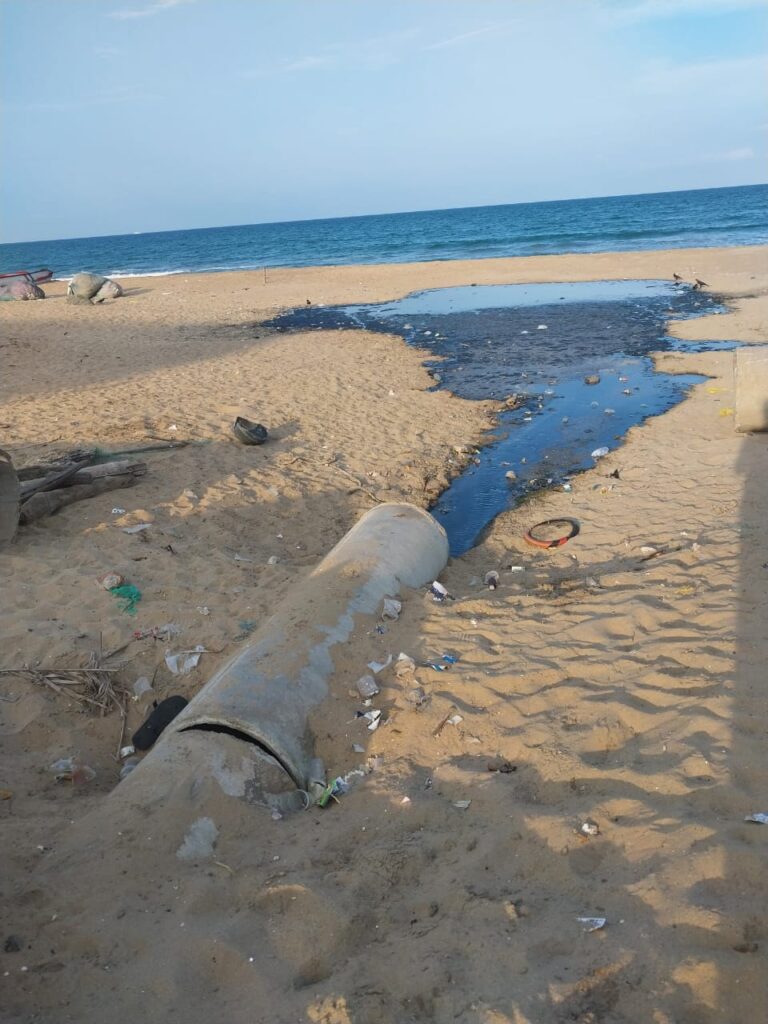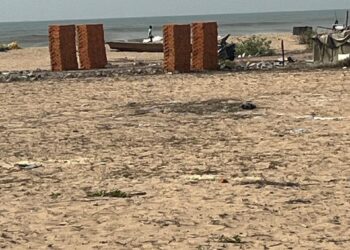The recent rains on October 14 and 15 brought attention to a concerning observation at Thiruvanmiyur beach, where stormwater drains (SWDs) discharged excess water onto the beach, creating a rivulet and causing alarm among residents and activists. The Greater Chennai Corporation’s (GCC) use of this band-aid solution for flood mitigation raises serious environmental and ecological concerns, particularly regarding the coastal dune ecosystem.
Routing massive amounts of stormwater into beaches through pipes can have significant environmental, ecological, and health:
- Beach erosion: Discharging large volumes of stormwater into beaches can accelerate coastal erosion. The force of stormwater flow can strip sand from the beach, destabilize dunes, and weaken natural coastal defences. Sediments from SWDs can alter natural sand movement patterns.
- Pollution of coastal waters: SWDs in Chennai have often been reported to also carry sewage. Such water when routed directly to the beach introduces these pollutants into the coastal ecosystem, directly impacting marine life.
- Marine ecosystem disruption: Sudden influxes of fresh water can disturb the salinity levels of coastal waters, impacting marine species adapted to specific saline conditions. Pollutants carried by the stormwater can also cause toxic algal blooms, harm fish populations, and disrupt the broader ecosystem. An example of this was the bio-luminance spotted across Chennai beaches.
- Backflow during high tide: During high tide, there will be a backflow of waterflooding in low-lying areas or streets near the coast, as the pipes intended to carry water away from these areas are instead carrying seawater back into them. It will also increase the pressure on the drainage system and accelerate erosion of pipes due to saltwater, thus increasing maintenance costs.
- Impact on tourism: Polluted stormwater discharges can make beaches unsafe for recreational activities such as swimming, surfing, and fishing, negatively impacting local tourism and the economy.

Such discharge can be seen not at one but two places on Thiruvanmiyur beach and multiple places all along the Chennai coast. At Palavakkam and Kottivakkam, sewage is let out at the beach through pipes.
The beaches from Marina to Uthandi come under CRZ 1A and 1B. As per the Ministry of Environment and Forest, “No new construction shall be permitted within 500 metres of the High Tide Line. No construction activity, except facilities for carrying treated effluents and wastewater discharges into the sea, facilities for carrying seawater for cooling purposes, oil, gas and similar pipelines, will be permitted between the Low Tide Line and the High Tide Line.” Any other construction is a violation.
This practice underscores the need for a sustainable and environmentally sound flood mitigation strategy that takes into account the fragile coastal ecosystem and the well-being of local communities.
What would it take for the GCC to take notice and take corrective action immediately?











